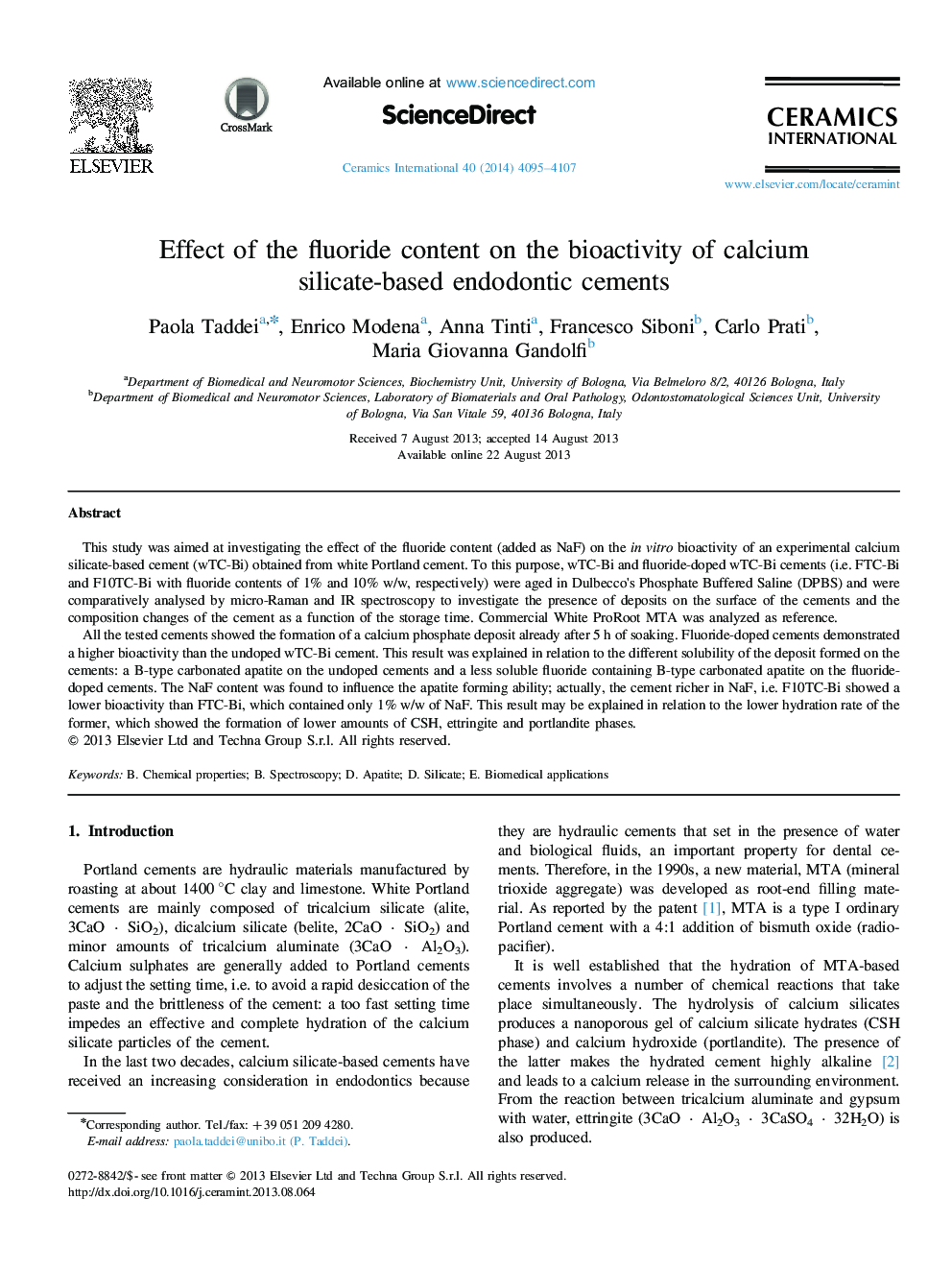| Article ID | Journal | Published Year | Pages | File Type |
|---|---|---|---|---|
| 1461428 | Ceramics International | 2014 | 13 Pages |
This study was aimed at investigating the effect of the fluoride content (added as NaF) on the in vitro bioactivity of an experimental calcium silicate-based cement (wTC-Bi) obtained from white Portland cement. To this purpose, wTC-Bi and fluoride-doped wTC-Bi cements (i.e. FTC-Bi and F10TC-Bi with fluoride contents of 1% and 10% w/w, respectively) were aged in Dulbecco's Phosphate Buffered Saline (DPBS) and were comparatively analysed by micro-Raman and IR spectroscopy to investigate the presence of deposits on the surface of the cements and the composition changes of the cement as a function of the storage time. Commercial White ProRoot MTA was analyzed as reference.All the tested cements showed the formation of a calcium phosphate deposit already after 5 h of soaking. Fluoride-doped cements demonstrated a higher bioactivity than the undoped wTC-Bi cement. This result was explained in relation to the different solubility of the deposit formed on the cements: a B-type carbonated apatite on the undoped cements and a less soluble fluoride containing B-type carbonated apatite on the fluoride-doped cements. The NaF content was found to influence the apatite forming ability; actually, the cement richer in NaF, i.e. F10TC-Bi showed a lower bioactivity than FTC-Bi, which contained only 1% w/w of NaF. This result may be explained in relation to the lower hydration rate of the former, which showed the formation of lower amounts of CSH, ettringite and portlandite phases.
